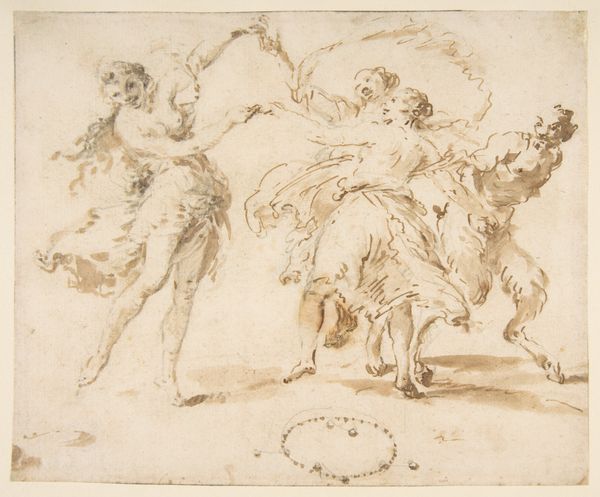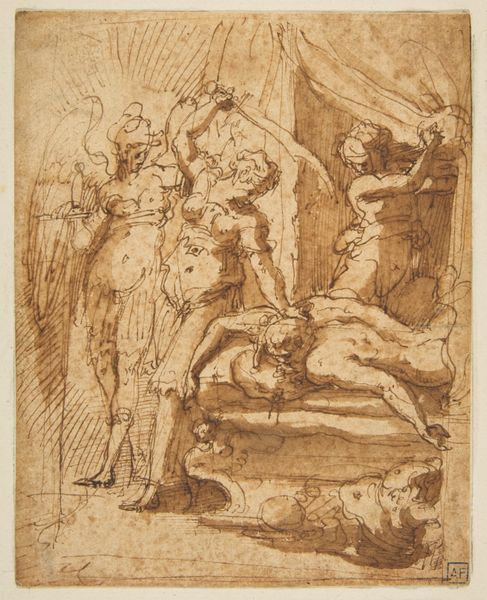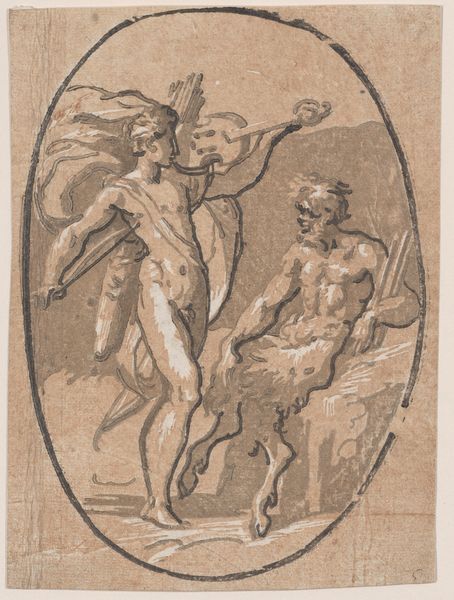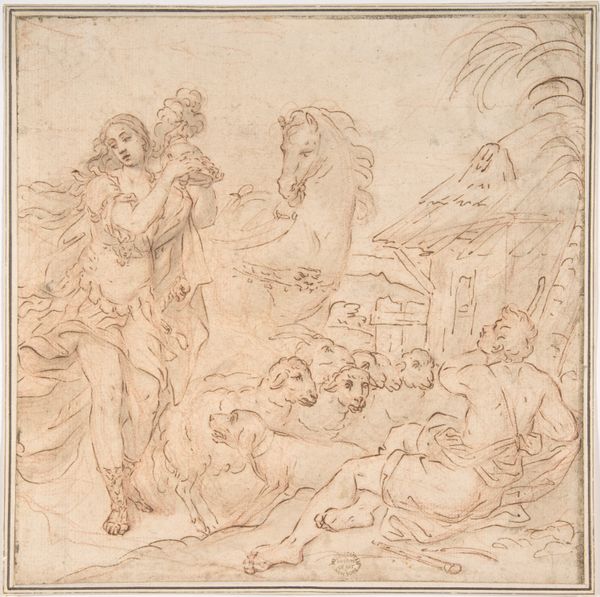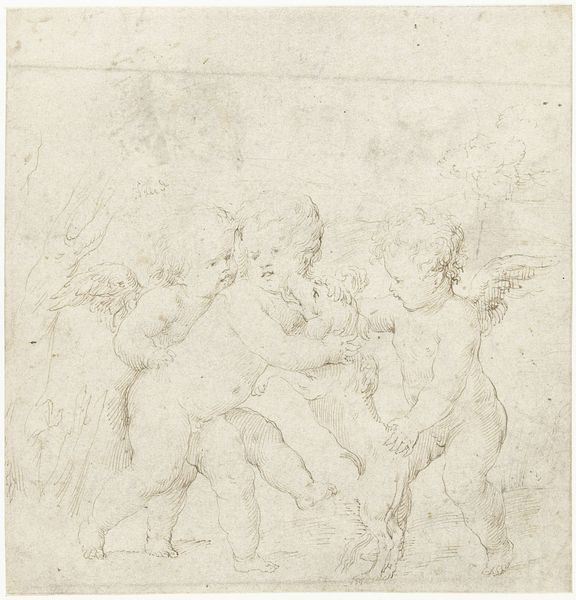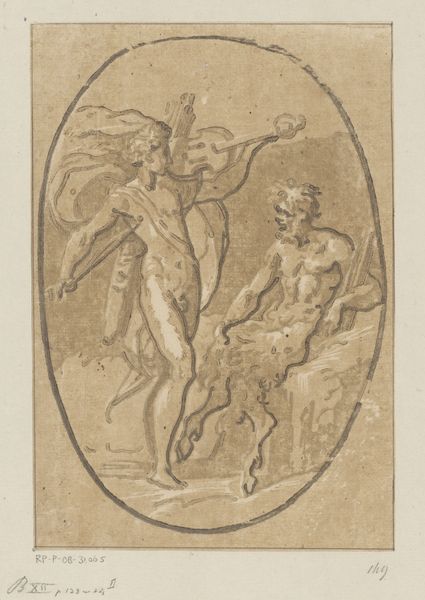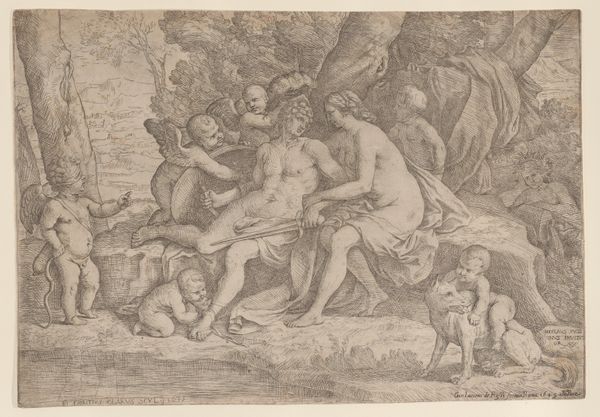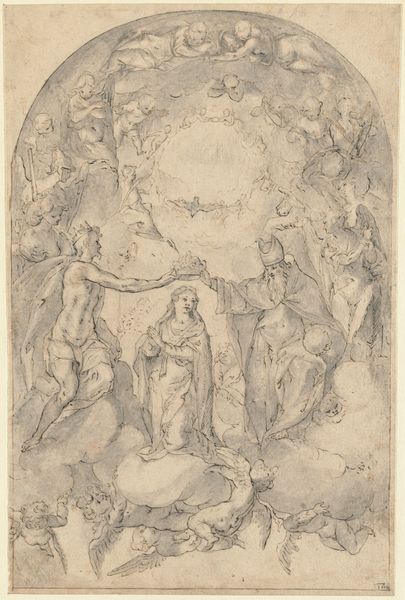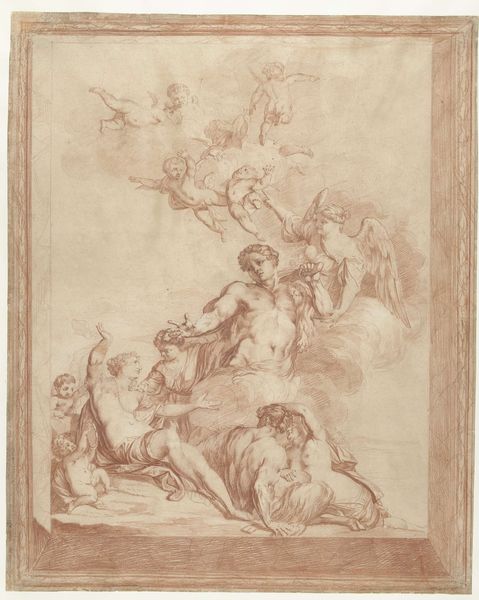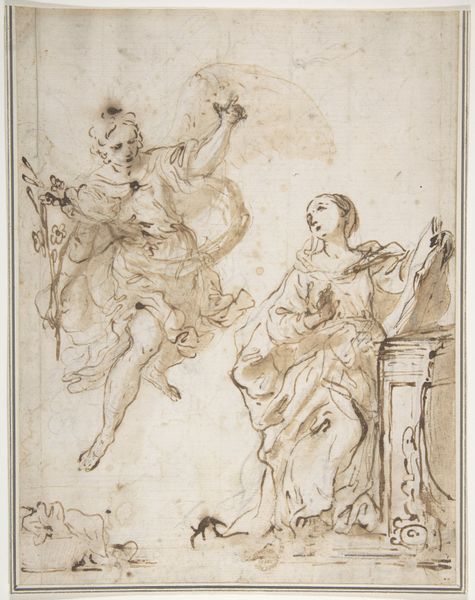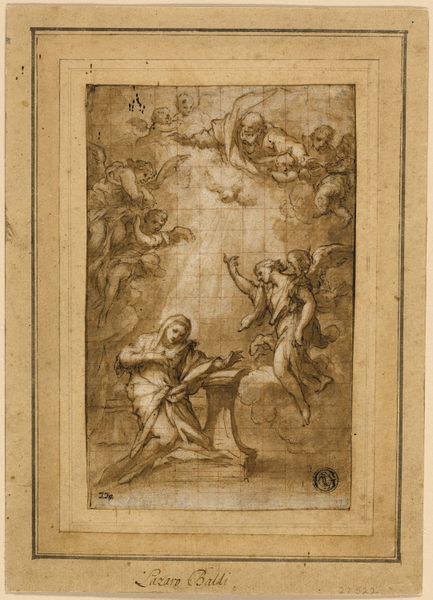
drawing, ink
#
drawing
#
figuration
#
11_renaissance
#
ink
#
group-portraits
#
history-painting
#
academic-art
Dimensions: 190 mm (height) x 165 mm (width) (bladmaal)
Editor: Here we have "The Judgement of Paris," a drawing in ink by Hans Rottenhammer, created sometime between 1564 and 1625. The figures are arranged within a circular frame. I'm struck by the contrast between the muscular, seated figure on the left and the softer, more feminine figures in the center. What can you tell me about it? Curator: The "Judgement of Paris" is a recurring subject. The seated figure is Paris himself, being asked to judge which of the three goddesses is the fairest: Hera, Athena, or Aphrodite. The subject explores themes of beauty, rivalry, and consequence. In your initial reaction, you perceived a contrast in musculature—what does that contrast suggest to you symbolically? Editor: Perhaps it reflects a cultural idea about the roles or nature of men versus women. Is the story of Paris especially significant to this time period? Curator: Yes, absolutely. During the Renaissance and Baroque periods, classical mythology provided a rich source of allegorical and moralizing narratives. The tale served as a warning against vanity and hubris, especially among rulers. How might the *act* of judgement be seen here? Is Paris, for example, depicted with authority, perhaps with doubt? Editor: He looks a bit hesitant, actually. It looks like his arm extends to give an orb or fruit to the goddesses? This story must have offered ways to comment on contemporary power dynamics. Curator: Exactly. Rottenhammer uses this well-worn tale to delve into universal questions about power, beauty, and choice. Each goddess represents certain qualities; wisdom, power, and beauty, of course. By examining how he portrays these figures, we can see how societal values are encoded within the artwork. What are you left pondering now? Editor: How relevant classical themes stay through the centuries! And, how artists can use myth to discuss their present moment. Curator: Precisely! A powerful reminder of art’s ability to reflect and shape our understanding of the world.
Comments
No comments
Be the first to comment and join the conversation on the ultimate creative platform.
